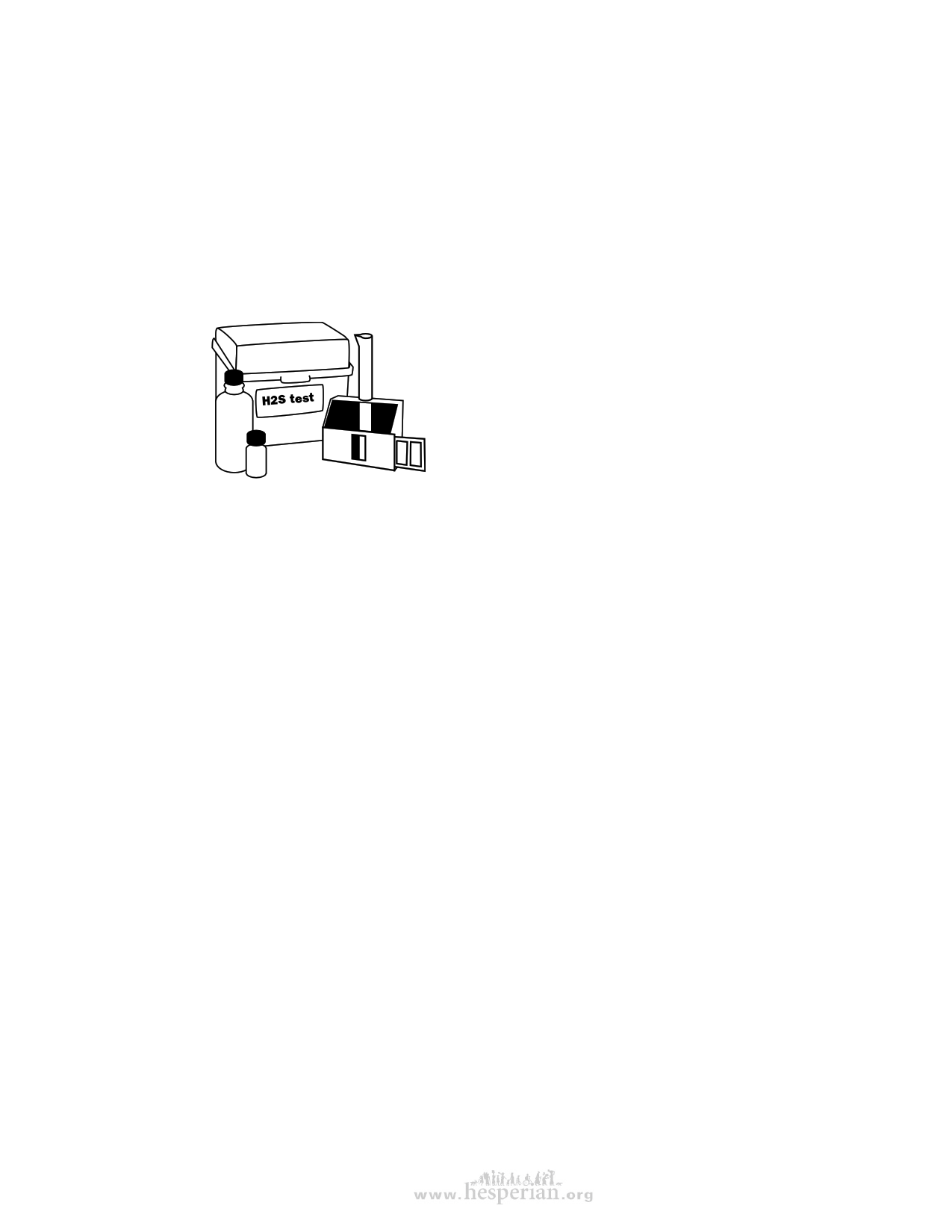
Water for Life 11
Testing for water safety
Testing water in a laboratory or with a water quality test kit can show the type
and amount of contamination. Water testing may be done by professionals, who
take samples of local water to a laboratory to test it. Laboratory testing is usually
necessary to find chemical contamination. These tests are helpful, but can be costly.
Testing water for germs may be done locally using a test kit. One kind of test kit,
called the H2S test, is widely used to test for germs in water. It is not costly (5 tests
cost about 1 dollar) and it gives quick results. But this test sometimes mistakes
harmless living things for germs, and it does not show if chemicals or harmful parasite
eggs are present. Another problem with this and
other water quality tests is that they only show
if the water is contaminated at the time and
place the water sample is taken.
H2S test
Water quality testing has many advantages
and can be used successfully under some
conditions. But it is not a replacement for a
community water assessment plan, careful
protection of water sources, and common sense.
Diarrhea diseases
Diarrhea, dysentery, cholera, and typhoid are caused by many kinds of germs carried
by human waste, unsafe water, flies and insects, and on food. Diarrhea can be a sign
of some kinds of worm and parasite infections. These illnesses may also be caused by
poor sanitation and a lack of enough water for personal cleanliness.
Signs of diarrhea diseases
The most common sign of a diarrhea disease is frequent, watery stools. It may be
accompanied by fever, headache, trembling, chills, weakness, and vomiting. Because
there are many causes of diarrhea and dysentery, knowing what treatment to give
depends on the kind of diarrhea.
These signs can help you know which diarrhea disease a person has:
• Cholera: diarrhea like rice water, severe intestinal pain and cramping, vomiting
• Typhoid: fever, severe intestinal pain and cramping, headache, constipation or
diarrhea
• Giardia: diarrhea that appears greasy, floats and smells bad, gas and burps that
smell like rotten eggs
• Bacterial dysentery (Shigella): bloody diarrhea, fever, severe intestinal pain
and cramping
• Amebic dysentery: bloody diarrhea, fever, severe intestinal pain and cramping